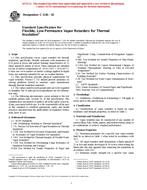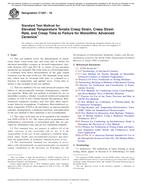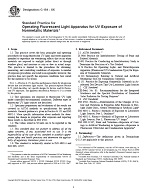1.1 This guide covers the use of a ground-water flow modeling code to simulate the movement of air in the subsurface. This approximation is possible because the form of the ground-water flow equations are similar in form to airflow equations. Approximate methods are presented that allow the variables in the airflow equations to be replaced with equivalent terms in the ground-water flow equations. The model output is then transformed back to airflow terms.
1.2 This guide illustrates the major steps to take in developing an airflow model using an existing ground-water flow modeling code. This guide does not recommend the use of a particular model code. Most ground-water flow modeling codes can be utilized, because the techniques described in this guide require modification to model input and not to the code.
1.3 This guide is not intended to be all inclusive. Other similar techniques may be applicable to airflow modeling, as well as more complex variably saturated ground-water flow modeling codes. This guide does not preclude the use of other techniques, but presents techniques that can be easily applied using existing ground-water flow modeling codes.
1.4 This guide is one of a series of standards on ground-water model applications, including Guides D5447 and D5490. This guide should be used in conjunction with Guide D5447. Other standards have been prepared on environmental modeling, such as Practice E978.
1.5 The values stated in SI units are to be regarded as the standard.
1.6 This standard does not purport to address all of the safety concerns, if any, associated with its use. It is the responsibility of the user of this standard to establish appropriate safety and health practices and determine the applicability of regulatory limitations prior to use.
1.7 This guide offers an organized collection of information or a series of options and does not recommend a specific course of action. This document cannot replace education or experience and should be used in conjunction with professional judgment. Not all aspects of this guide may be applicable in all circumstances. This ASTM standard is not intended to represent or replace the standard of care by which the adequacy of a given professional service must be judged, nor should this document be applied without consideration of a project’s many unique aspects. The word “Standard” in the title of this document means only that the document has been approved through the ASTM consensus process.
Product Details
- Published:
- 01/01/2000
- Number of Pages:
- 5
- File Size:
- 1 file , 82 KB


